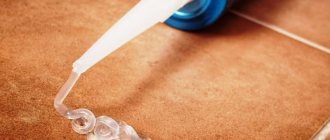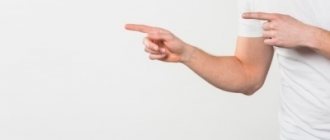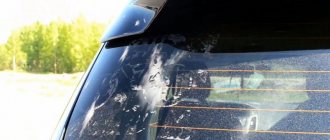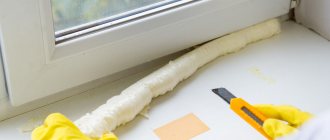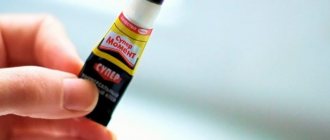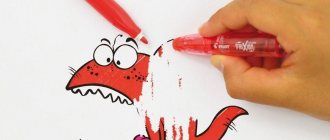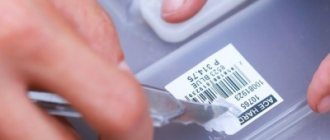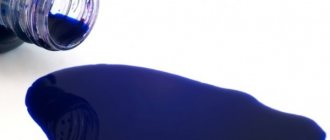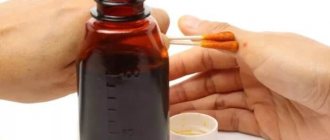In the twentieth century, a “by-product” of the experiments of the American chemist Harry Coover, who worked on the creation of transparent plastic for optical sights, was a certain substance with a unique ability to firmly connect various materials. This is how superglue was born.
The action of any superglue is ensured by the cyanoacrylate it contains. This component, when interacting with air, quickly hardens, firmly connecting the surfaces. This is why it is so difficult to remove Moment glue from clothes or remove stains from other materials. However, the problem can be solved.
How to remove Moment glue from your hands: 5 delicate ways
However, not everyone is so prudent as to stock up on anti-glue in advance. Folk remedies will come to the aid of the “victims”. You can remove superglue from your hands using five delicate compounds that do not injure the skin.
Soap solution
Peculiarities. Warm water and any detergent (coarsely grated laundry soap, liquid soap or dishwashing liquid) are used as active ingredients.
How to act
- Fill a suitable size container (basin or deep bowl) with warm water.
- Add detergent (a very strong soap solution is needed).
- Soak your hands in the mixture for ten minutes or more. As the solution cools, you need to add warm water from a pre-prepared kettle standing nearby.
- Use a soft sponge to wipe the stained areas. You can use a pumice stone, but you should rub it carefully so as not to injure the skin.
- Wash your hands with running water.
- Repeat if necessary.
To enhance the effect, after the bath you need to treat your hands with margarine, Vaseline or glycerin - this will make the glue rub off easier.
Vinegar and vegetable oil
Peculiarities. Acetic acid and fats contained in the oil destroy the structure of cyanoacrylate, making it easier to wash the product off the skin.
How to act
- Prepare a warm vinegar solution and pour it into a basin or bowl.
- Immerse your hands in the composition.
- Wait ten minutes.
- Soak a cotton pad in vegetable oil and begin wiping your hands off the glue.
- Wash off any remaining product with warm water and soap.
Nail polish remover
Peculiarities. You will need nail polish remover containing acetone.
How to act
- Apply nail polish remover to the dried glue using a cotton pad.
- Wait five to ten minutes.
- Wash your hands under warm running water for 15-20 minutes, alternately treating the skin with soap and a rich cream or lotion.
Baking soda
Peculiarities. Instead of soda, you can use table salt. In this way you can remove clothes.
How to act
- Pour enough water into the baking soda to form a mass that resembles a paste in consistency.
- Apply the composition to the dried glue.
- After five to ten minutes, remove the residue with running water.
Ammonia
Peculiarities. Removing glue with ammonia is not recommended for excessively dry and sensitive skin. Work with ammonia in a well-ventilated area.
How to act
- Using a cotton pad, wipe the contaminated areas with ammonia.
- Wait five to seven minutes.
- Wash your hands with running warm water.
There is no need to remove the glue from your hands: along with dead skin particles, it will come off on its own after two to three days. True, it will be very difficult to do everyday things because of your fingers sticking to everything.
Vinegar
Another magical remedy. If vinegar is diluted with water, it can be used to clean metal and wood. You will need essence. It is this that we dilute with H2O in the proportion of 2 parts water to 1 part vinegar. Dip the brush and the desired area into the resulting composition.
In difficult cases, apply the solution to the stain, cover it with cellophane film on top, and leave it like that for a quarter of an hour.
Then you can start cleaning. In some cases, pre-treatment of things in vinegar “baths” is allowed. Of course, the next step will be to wash them.
Safety precautions when cleansing the skin
When removing glue from your hands, you need to:
- monitor the skin reaction - in case of undesirable manifestations (severe redness, irritation), stop manipulation immediately;
- do not use sandpaper or gasoline - it is important to painlessly and carefully remove superglue from the skin;
- take care of your hands - after any procedure aimed at removing glue, lubricate the skin with a nourishing and/or moisturizing cream.
You can prepare your own restorative hand mask. Crush warm boiled potatoes and mix with heated milk to obtain the consistency of thick sour cream. Apply the mixture to your fingers and put on cotton gloves. After 15-20 minutes, wash your hands with running water and apply nourishing cream.
Another way to separate glued fingers
Let's call it mechanical.
Its essence consists in preliminary steaming the hands in a specially prepared solution and then further treating them with friction. Pour 3-4 liters of hot water, mix it with sea salt, glycerin, and one teaspoon of citric acid.
Place your hands there and hold for 15 minutes. This will help reduce the adhesion of the glue to the epidermis.
Next, you should try to remove and get rid of Moment stains through prolonged, thorough hand washing. If that doesn’t help, take a pumice stone and gently rub it in places where the remnants of the “Moment” are still visible.
For particularly delicate skin, to avoid damage, try replacing the pumice stone with a scrub. It contains particles that act as an abrasive. The cleaning process will be more gentle. After completing the procedure, be sure to lubricate your hands with nourishing cream.
Suitable solvents for other surfaces
Having decided to remove the glue stain, you need to:
- start cleaning as soon as possible - the more the glue dries, the more difficult it is to save your favorite thing;
- check the effect of the product on an inconspicuous area - the aggressive composition can not only dissolve the glue, but also damage the surface, as well as discolor the painted material;
- Observe safety precautions - it is recommended to clean off the glue with rubber gloves in a well-ventilated area.
Video on the topic
Products that superglue is “afraid of”
Products that destroy cyanoacrylate will help remove superglue from fabric, shoes, furniture and other surfaces:
- acetone (or nail polish remover);
- vinegar solution (a tablespoon per glass of water);
- lemon juice;
- "Dimexide";
- ammonia;
- false eyelash remover.
"Dimexide" is a medicine prescribed for the treatment of joints. The drug easily penetrates the body through the skin, so when using it, be sure to wear rubber gloves.
Clothing and fabric
- Place the product on a sheet of thick cardboard.
- Soak a cotton pad in the chosen product.
- Treat dried glue.
- Wait 30-60 minutes.
- Using a brush or sponge, scrub off the stain.
- Rinse the product in clean water.
There is no need to try to remove dried Moment glue from clothes if the item is made of delicate fabric: it is better to immediately take the item to dry cleaning.
Leather shoes and bags
- After moistening a cotton pad with solvent, wipe the stain.
- Wait 15-20 minutes.
- Remove easily coming off adhesive with a damp cloth.
- Wipe the treated area dry.
To clean glue from shoes and other leather products without scratches, you need to wipe off the stain with a soft sponge or cotton pad.
Suede products
- Hold the product over boiling water for several minutes (or use a steam generator).
- Soak a cotton pad with the chosen product and wipe the stain.
- Remove residues with a clean damp cloth.
- Apply suede impregnation to the treated area and lift the pile with a special brush.
Floor and cabinet furniture
- Moisten a cotton pad with solvent.
- Treat the contaminated area and wait 15 minutes.
- Pick up the adhesive stain from the edge with a wooden or silicone spatula and remove. If the surface is scratch-resistant, you can use sandpaper to scrape off the stain faster.
- Wipe the treated area with a clean cloth.
You can remove superglue from furniture and floors with gasoline or a solvent such as white spirit. In this case, you need to open all the windows and send the children for a walk. Gasoline does an excellent job of removing traces of a glue gun.
Upholstery of upholstered furniture
- Soak a napkin with your chosen product.
- Apply to the stain for 20-30 minutes.
- Wipe the treated area with a clean damp cloth.
Sometimes a mechanical method helps to quickly remove dried instant glue from upholstered furniture: you can “beat” the stain using a rolling pin or a wooden masher.
Features of removing super glue
For the ability to quickly dry super glue, the Moment is usually called a second. Its hardening during the gluing process occurs on average in 60 seconds. Upon contact with water, Moment glue becomes hard almost instantly. It is capable of firmly bonding parts even when applied in a thin layer. In addition, some variations of Moment super glue are heat-resistant. Since the consumption of the product is very low, it is produced in small tubes. One drop of super glue can cover up to 2.5 cm of area.
There are several types of super glue. Each of them requires a specific approach. How to wipe off Secunda glue also depends on what material it came into contact with. This is because some products used to dissolve glue can damage the parts being glued. When working with Moment super glue, safety precautions should be observed. The use of wool and cotton materials is strictly prohibited. If they come into contact with cyanoacrylates contained in the second glue, you can get burned.
High-quality super glue is resistant to moisture and high temperatures. It can only be removed by a professional product that can be purchased at a hardware store. Their main disadvantage is the chemicals in their composition that have a high level of toxicity.
Attention! Most often, one-component super glue is found on sale, but multi-component ones are also available. In the second case, in addition to cyanoacrylate binders, it contains fillers that conduct heat and electric current.
Hot and cold processing methods
Cyanoacrylate is destroyed under the influence of high and low temperatures, so in some cases an iron, hair dryer and freezer will help remove the glue.
Freezer
Peculiarities. Cold helps remove superglue from clothes and shoes. This method can be used if there are traces of fallen rhinestones on your T-shirt, or if chewing gum is stuck to your jeans.
How to act
- Place the stained item in a plastic bag and tie the bag tightly.
- Place in the freezer for several hours - the adhesive film will become fragile and can be easily peeled off.
Hairdryer
Peculiarities. The hot air produced by the hairdryer will help remove glue from clothes, shoes and surfaces that are not afraid of high temperatures.
How to act
- Direct a stream of hot air at the contamination, subjecting it to heat for several minutes.
- Remove curdled glue with a damp cloth.
- Wipe the treated area dry.
Using a hairdryer you can remove Moment glue from upholstery. But for MDF covered with PVC film, this method is not suitable.
Iron
Peculiarities. You can use an iron to remove superglue from clothes without water. Judging by the reviews, this method is one of the most effective for removing glue from fabric.
How to act
- Spread a cotton cloth on the ironing board and place the product with the adhesive stain.
- Cover the top with another piece of cotton fabric.
- Iron the area with the stain on both sides with a hot iron.
- Repeat if necessary.
Salt
Multifunctional, and therefore a blessed gift of nature. Salt not only adds flavor to dishes and saves food from spoilage during long-term storage, it can do more. For example, act as an abrasive if nothing else is nearby.
A little water, a pinch of salt and dirt on the plates, glass, tiles is as usual. It will remove the adhesive film from the fingers, as well as from other parts of the skin.
Suddenly? But almost everyone has such a thing as salt along with sugar. Just know that “Moment” can be deleted anyway.
Recommendations
- Work with solvents and the glue itself using latex gloves in ventilated areas.
- Dried glue can be removed using a needle and knife.
- Do not point the tube at yourself.
- Do not twist the tube, it may leak through the breaks.
- If the glue gets into a hard-to-reach place, you need to take vinegar and use a syringe to spray it into the hole. Then use a needle or toothpick to clean the insides.
- If it gets into the eye, consult a doctor immediately. Take the glue with you, it will be easier to understand how to help.
- Be careful when choosing a cleaner.
Helpful information
Tips that will come in handy when removing adhesive traces:
You need to start processing as early as possible. The longer the adhesive remains on the surface, the more difficult it is to remove.- To remove glue, use a cotton pad or a light cloth. If the fabric is colored, the pigment can be absorbed from it into the surface being treated. This will require additional cleaning.
- After removing the glue, the surface to be treated should be rinsed with clean water or wiped with a damp cloth to remove any remaining solvent.
- When using aggressive compounds, it is recommended to test them on an inconspicuous area.
- When working with volatile substances, you must protect your respiratory system with a mask. Caustic compounds require the use of gloves.
Good advice
- Do not try to get rid of the glue on your skin using dynamic loads. If you pull or tear off the stuck substance, you will eventually get damaged or wounded.
- White spirit is a type of harsh substance that is not suitable for cleaning leather. Do not use it in such cases. Moreover, take care of your hands.
- Do not try to immediately remove glue from the fabric with a brush or other equally harsh method, unless you first try to soften the joint. The result will be disastrous. Instead of returning to the original form, you get a hole.
- Acids and alkalis have ways to ruin delicate clothing.
The process of removing quick glue is unpleasant, often quite labor-intensive and not always effective.
Sometimes it is not possible to return a product to its original appearance, no matter how hard you try. Repairs turn into wasted nerves, family scandals, in general, into a complete disorder.
The best way to avoid problems is to hide the “Moment” and what is under its influence away from small children, and do not work with it in their presence; prudently protect surfaces from possible splashes of such a tenacious substance; take your time, don’t get distracted, work with it very carefully.
Simple rules, right? But as a result, there will be no leaks, unnecessary stains, reasons for sorrow and disasters. What a beauty!
Water
Water is a popular solvent. The main advantage is versatility.
The use of water is justified only if the glue is water-based. The effectiveness of the method is due to the following fact: adhesives are often water-based. However, a favorable outcome of the procedure is only possible if the glue has not had time to dry completely. Only then is it possible to remove the glue in the shortest possible time.
Wipe up excess glue with a rag, blotting the treated area with plain water. Repeat these steps until the glue disappears completely. The method will not work if the glue has dried completely.
Special means
The industry produces special products that differ in their composition and are suitable for certain types of surfaces. The following chemical superglue solvents are sold in specialized stores:
- "Super Moment Anticley";
- "Contact";
- "Anticle" and others.
First, be sure to read the instructions on where and how they are used.
What is prohibited to do
- Forcefully separate fingers stuck together by glue without using special compounds.
- Peel off dried superglue, as this can cause deep damage to the skin. It is better to initially soften the stain and only then scrape it off.
- Remove dried superglue with sharp objects.
- Use chemicals if the skin is injured, even minor scratches.
- Use toxic products in poorly ventilated areas.
- Use flammable products near sources of direct fire.
